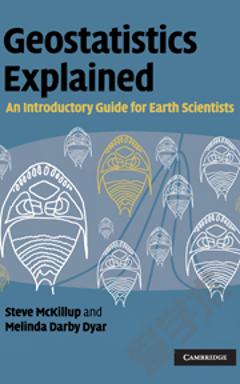Geostatistics Explained: An Introductory Guide for Earth Scientists
Preface 1. Introduction 2. 'Doing science' - hypotheses, experiments and disproof 3. Collecting and displaying data 4. Introductory concepts of experimental design 5. Doing science responsibly and ethically 6. Probability helps you make a decision about your results 7. Working from samples - data, populations and statistics 8. Normal distributions - tests for comparing the means of one and two samples 9. Type 1 and type 2 error, power and sample size 10. Single factor analysis of variance 11. Multiple comparisons after ANOVA 12. Two-factor analysis of variance 13. Important assumptions of analysis of variance: transformations and a test for equality of variances 14. Two-factor analysis of variance without replication, and nested analysis of variance 15. Relationships between variables: linear correlation and linear regression 16. Linear regression 17. Non-parametric statistics 18. Non-parametric tests for nominal scale data 19. Non-parametric tests for ratio, interval or ordinal scale data 20. Introductory concepts of multivariate analysis 21. Introductory concepts of sequence analysis 22. Introductory concepts of spatial analysis 23. Choosing a test Appendix A. Critical values of chi-square, Student's t and F Appendix B. Answers to questions References Index.
{{comment.content}}








 京公网安备 11010802027623号
京公网安备 11010802027623号